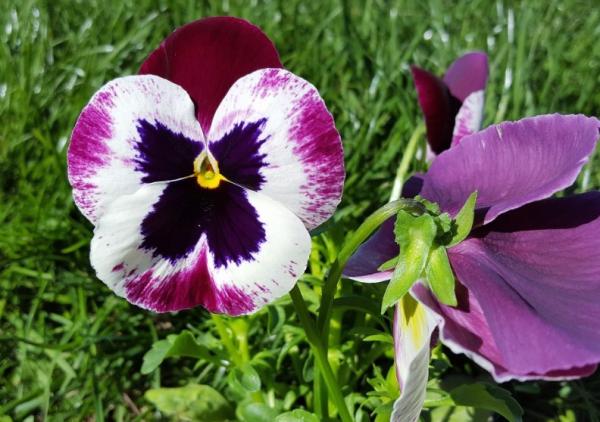
Pansy flower care: How to do it yourself in your garden
With the scientific name Viola x wittrockiana, the pansy plant is a biannual hybrid plant derived from the viola tricolor. It was originally crossed in northern Europe and currently has many varieties, with all kinds of colors and flower sizes. They have highly appreciated plants in gardening, especially for their showy and beautiful flowers and their ability to prevent weeds’ growth, which makes them ideal to be planted at the foot of shrubs.
Pansy flower care
In summary, these are the basic care of thoughts or thought flower:
- Light: it needs good natural lighting, being able to tolerate semi-shade.
- Soil: requires soils with a large number of nutrients and organic matter.
- Watering: every 3 days in the flowering period.
- Climate: withstands most non-extreme climates.
Pansy flower characteristics
These are the main characteristics of the pansy flower or also called pansies:
- It is a biennial plant, the first year only produces leaves and the second gives flowers.
- Under very optimal care, it can become perennial.
- It is eatable.
- It blooms in autumn and in warm climates. Its flowering can extend until spring.
- Works great as a natural coverage.
- It began to be crossed in the years 1820-1830.
Light, location and climate
The flowers of pansies were initially crossed in northern Europe, so enduring a very wide temperature range, from very warm to frost, are not too intense. It is important to place it in a very bright area, where it receives a good amount of sunlight. If the climate is very hot or with very intense sun, it is advisable to place them in semi-shade or at some point where they are sheltered from the hours of strongest influx. It is a plant that is usually located outdoors, especially because of its ability to withstand the cold and inhibit the growth of weeds, which makes it highly recommended to cover spaces in the garden.
Watering the pansy flower
The most important thing with this plant is to keep the soil always relatively humid but never soggy. Overwatering or poorly draining soil could cause excess moisture at its roots, making the plant sick or weak. More frequent watering will be necessary for the flowering season, every 2 or 3 days depending on the climate and soil’s specific characteristics.
Pansy flower land
Pansies require soil that is quite rich in nutrients. If planted in autumn, soil with a good proportion of organic fertilizer will be enough to maintain the plant for a few months. Still, after 60 or 90 days, it will be necessary to apply new fertilizer doses, if possible, to be organic.
Here we recommend worm humus, which is very beneficial for both the plant and the soil due to its composition and contribution.
Thought pruning
The pansy flower tends to lose much of its vitality when the hot months arrive after its flowering, being common for the plant to die if nothing is done. To avoid this and to get our thought flower to live as a perennial plant instead of a biennial, it will be necessary to carry out aggressive pruning as soon as temperatures rise, leaving only the stem.
Pansy flower pests and diseases
To finish talking about the care of the thought flower, here are the most common pests and diseases of the thought plant :
One of the main threats to this plant is the attack of aphids, which is a quite common and considerable risk. To prevent its appearance or combat it, a multitude of homemade and ecological insecticides can be used, such as infusion of garlic or onion, wormwood or chamomile, in addition to potassium soap and Neem oil. Learn more options in this other post about the best Home Remedies to eliminate aphids on plants.
When it comes to fungi, powdery mildew is the one to be most careful with. It usually appears as spots of whitish or gray tones on the leaves or stems. As in the case of aphids, it can be fought with home remedies. A very common one is the milk-based fungicide, which is made by mixing one part of skimmed milk for every 4 parts of water, plus 20 grams of bicarbonate for each liter of the mix. Spray this remedy on the affected leaves and remove those that are in very bad condition. Repeat every 15 days or after heavy rain to use it preventively.




